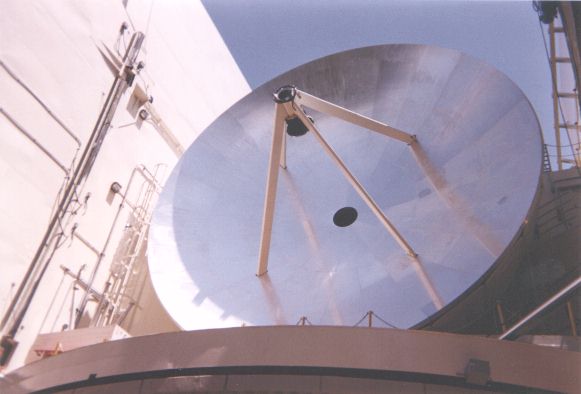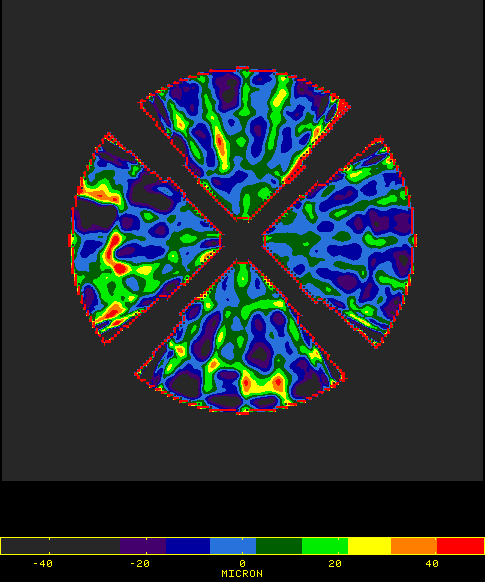
 .
.

In addition to receiver and atmospheric complications, the physical design of a submillimeter telescope also presents some interesting challenges. Any telescope's mirror surface, be it a radio or optical telescope, must be smoother than a small fraction of the wavelength of light sought. In the case of submillimeter-wave telescopes, this stipulates that the telescope "dish" (called the primary reflector) must have no surface irregularities larger than about 20 microns (1/50,000th of a meter, about the thickness of a human hair). Imagine building a 33 foot (10 meter) curved surface to the tolerance of a thickness of a human hair! Even more important is the fact that this tolerance must be maintained regardless of temperature change, sunlight, and wind. The meeting of these requirements through a carefully designed composite supporting structure makes the SMT the most accurate radio telescope ever built.
